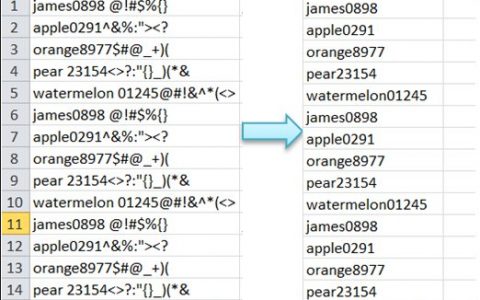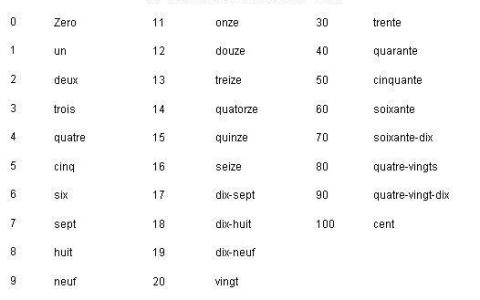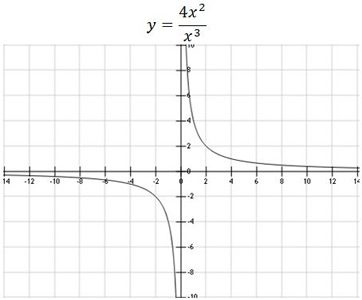Have you ever wondered how DNA affects eye color? Yes, your DNA has the genetic information that codes for the color of your eyes. Thus, your eye color is based on the pigment that is inside the eyes. But to have that pigment, you have genes. Genes are protons of DNA that can code for proteins that help make that pigment. So, in this article, we are going to discuss how your DNA can lead to the making of protein which we call Protein Synthesis.
Definition of Protein Synthesis:
Synthesis essentially means to “make something” so protein synthesis means to make protein.
Thus, protein synthesis is a biological process of transforming DNA into protein molecules. Subsequently, the process of protein synthesis includes a few steps like amino acid synthesis, transcription, translation, and post-translational events.
Where protein synthesis takes place
The process of protein synthesis occurs at the site of ribosomes in a cell. Hence, inside the ribosome, the RNA leads the catalytic steps of protein synthesis. Apart from that, it stretches amino acids to produce protein molecules.
Before we discuss the process of protein synthesis, we need to know about protein and other molecules used in the whole process of protein synthesis.
What is DNA?
DNA, deoxyribonucleic acid is a complex genetic compound that plays a big role in protein synthesis. Hence, these DNA with their unique genetic codes creates genomes. Moreover, Deoxyribonucleic acid has a double helix structure like a twisted ladder. Thus, it has all the necessary information to build any body part.
What is RNA?
RNA, ribonucleic acid is a complex compound like DNA. Here, ribose and phosphate are the main components that create RNA. Unlike the structure of DNA, RNA has a single-stranded structure. Therefore, it takes part in protein synthesis and also plays the main role of carrying genetic codes in some viruses.
The three basic types of RNA is
- mRNA: messenger RNA
- rRNA: ribosomal RNA
- tRNA: transferRNA
What is protein?
Protein is basically a structure made of multiple different amino acids. Moreover, it is a highly complex structure/ molecule that is present in almost every cell. Thus, protein performs many important actions of a body like DNA replication, making cell structure and organisms, responding to stimuli and transportation of molecules. Just like other biological molecules, protein takes an essential part in crafting organisms and participating in every cell function.
Protein synthesis steps
Protein synthesis involves a few major steps,
- Transcription
- Genetic code
- tRNA
- Ribosomes
- Translation
- Polyribosomes
Transcription, the first stage of Protein synthesis
Transcription is the first major step of protein synthesis. Hence, this is where it copies the segment of DNA into RNA. However, these transcripted RNA molecules can encode protein. Thus, DNA and RNA both are nucleic acids that can transform into each other in the presence of enzymes.
In the process of transcription, RNA polymerase reads a DNA sequence. Later it converts into a complementary, hence antiparallel RNA strand.
Process
- Firstly, the RNA polymerase reads the DNA sequence and in presence of few general transcription factors, binds to promoter DNA.
- Then the two strands of DNA helix are separated by the transcription bubble. Thus, RNA polymerase generates these transcription bubbles. Moreover, these transcripted bubbles break the hydrogen bonds between the DNA helix and separate them into two strands.
- After this, polymerase adds the separated single-stranded DNA nucleotides that are RNA nucleotides.
- Next, to form an RNA strand, the RNA polymerase helps the RNA sugar-phosphate to react.
- The newly-made RNA strands are now free after the break of H-bonds of the RNA–DNA helix.
- In the cases of cells containing the nucleus, the RNA is further processed.
- Again, the RNA may stay in the nucleus without leaving or maybe can exit through the nuclear pore complex.
]
We can divide transcription into three stages:
Initiation:
Transcription in bacteria begins with the binding of RNA polymerase into the promoter of DNA. In the RNA polymerase, there are five subunits: 2 alpha subunits, 1 beta subunit, 1 beta-dash subunit and one omega subunit.
At the beginning of initiation, RNA polymerase is associated with a sigma factor that helps to find the appropriate -35 and -10 base pairs downstream of the genetic sequence.
Elongation
In this stage of RNA synthesis, the enzymes use the template strand (one of the helix strands of DNA).
As the process of transcription continues, to create an RNA copy, the RNA polymerase traverses the template strand. Thus, it also uses the DNA template with base pairing complementary to create an RNA copy.
Although the RNA polymerase travels from 3′-5′ on the template strand, the non-template strand or the newly made RNA strand can be used as reference points. Hence, the transcript occurs from 5′-3′.
This process produces RNA molecules that are the same as the coding strand. However, it just has few differences like it replaces thymine with uracil and ribose sugar composes the nucleotides. On a single DNA strand, the mRNA can transcript multiple RNA polymerases and as a result, it composes so many mRNA molecules from a single strand of the gene.
Therefore, elongation also includes a proofreading mechanism that can replace bases that are incorrectly incorporated.
Termination
In cases of bacteria, the transcription transmission occurs in two different strategies. Here, one is Rho-independent and the other is Rho-dependent.
- The RNA transcription in Rho-independent transcription stops when the newly synthesized RNA forms a G-C rich hairpin loop and a run of U’s. Hence, this detaches the RNA molecule from the DNA template.
- In the process of Rho-dependent transcription the protein factor “Rho-” breaks the bond between the templates and the mRNA. Hence, the newly synthesized mRNA release from the elongation complex.
Genetic code
Properties of genetic code
- Genetic coding is universal. Hence, to specify each amino acid every prokaryotic and eukaryotic use these codes.
- The form of the genetic code is a triplet. Three different or same nucleotides create one codon. However, 61 of the nucleotides code for amino acids. Among them UAA, UAG and UGA are nonsense codons.
- The type of code is dissolute. The codon uses more than one word for a particular amino acid.
- The codes don’t overlap. Thus, we cannot find the same base of mRNA in two different codons.
- The codes don’t use any special symbols or commas.
- Genetic codes don’t have a double meaning or symbolization. Whenever the same amino acid comes, it codes the same.
Structure of tRNA
Ribosome
There are two subunits in bacterial ribosomes. They are unequal in size. Thus, the larger one has sedimentation of coefficient 50s while the smaller one of 30s.
Therefore the two subunits are irregular in shape and fit together creating a cleft. Hence, it is through which mRNA passes during the translation process.
Translation
The first stage of protein biosynthesis is translation. In this stage, it decodes the mRNA to produce protein. Thus, the whole translation process occurs in the cytoplasm where the ribosomes are located. These ribosomes have two types of subunits surrounding the mRNA.
The ribosomes decode the mRNA to produce specific polypeptides. However, it follows the specific rules of the genetic code to decode the mRNA. This process uses the mRNA sequence as a form of template that guides the chain of amino acids. Thus, later, these amino acids form protein.
There are other types of RNA too that are not necessarily transcripted to amino acids. Thus, they are tRNA, ribosomal RNA and smaller nuclear RNA.
There are four phases in translation:
● Activation
In the first step of translation the correct amino acid bonds covalently with the specific transfer RNA. This is technically not the beginning process of translation. However, this process is required to start the translation.
The carboxyl group of amino acids join the 3′ OH of the tRNA creating an Ester bond. Thus, the tRNA becomes charged once the amino acids attach to it.
● Initiation
In prokaryotes, the initiation process requires the two subunits of the ribosome. GTP, mRNA, tRNA. Moreover, three initiation factors that are IF1, IF2 & IF3 are also required.
The sequence of the event is as follows
The initiation factor 3 binds to the smaller subunit (30s). Hence, this action prevents the 60S subunit to bind to IF3 without an mRNA molecule. However, this would result in forming an inactive ribosome.
Now IF3 binds with GTP and the IF1 binds to the smaller unit (30S). This whole thing will assist the charged tRNA to bind.
The smaller unit attaches with an mRNA molecule and makes use of the RBS on the mRNA. With the base codon, the initiator transfer-RNA binds to the complex. Thus, it binds the complex with the AUG codon on mRNA.
In this stage, the IF1 releases the smaller subunit as its role in keeping the subunit separate and helping the messenger-RNA to bind is complete. Now, this becomes a 30S initiation complex.
After this, the 50S can bind with the complex becoming a 70S initiation complex. In this process, the IF1 & IF2 displace and the GTP hydrolysis as it is an energy-consuming step.
The assembled ribosomes have two sites in which the tRNA can bind. Hence, these sites are called A and P sites. The “A” stands for acyl and the “P” stands for peptidyl sites.
The acyl site is where the newly composed aminoacyl tRNA molecule binds and in the peptidyl site, we can find the growing polypeptide chain.
- One major result of initiation is the placement of initiator tRNA in the peptidyl site.
- Except for this tRNA, all other tRNAs enter Site A.
- The 70S initiation complex helps to start the elongation cycle.
● Elongation
The process of elongation occurs in three steps as follows
- Aminoacyl transfer-RNA delivery:
In this stage, the GTP provides energy through hydrolysis and the elongation factor EF-Tu delivers the aminoacyl tRNA to the Acyl site.
Next, the EF-Ts helps the GDP complex to regenerate. In the exchange cycle of EF-Tu EF-Ts, the EF-Ts displaces the GDP, which subsequently displays itself as GTP. The composed EF-Tu GTP complex now binds with another aminoacyl tRNA and delivers it to the ribosome.
Except for the initiator tRNA, all other tRNAs can form this complex with the help of EF-Tu.
- Peptide bond formation
After the delivery of aminoacyl tRNA, the two amino acids that will join in the “A” site and the “P” site are in proximity.
50S subunit that can perform the peptidyl transferase activity, can now create a peptide bond between the two mentioned amino acids. Since the ATP already charges the tRNA, the subunit needs no further energy to create the bond.
- Translocation
In this stage GDP releases energy to bind a complex of translocase and ribosome. Then the discharged tRNA releases from the P-site. Now, the peptidyl tRNA moves from the A site to the P site and the mRNA moves from codon to codon and the ribosome.
With the release of the reusable GDP and EF-G, a new codon is now present in the A site.
This cycle of translocation continues until the nonsense codons (UAA, UAG, UGA) come into the A site.
● Termination
When one of the three termination codons enters the A site, the termination of polypeptide synthesis occurs. RF1 can recognize the stop codon UAG and UAA, and RF2 can recognize the UGA and UAA.
No transfer-RNA molecules bind to these termination codons, so the peptide and tRNA in the P site release the polypeptide into the cytoplasm through hydrolysis.
Either RF1 or RF2 binds with these stop codons and induces peptidyl transferase, which transfers the growing peptide chain to a water molecule.
Polyribosomes
Many ribosomes translate one strand of the mRNA rapidly, spaced closely together. These kinds of clusters of ribosomes are called polysomes or polyribosomes. This process allows the highly efficient use of mRNA.
Protein folding
After the synthesis of the polypeptide chain, the polypeptide chain folds and transforms into a specific structure that enables the protein to carry out its functions. Protein structure with the basic form is known as the primary structure. It is simply the polypeptide chain, which is a sequence of chemically bonded amino acids. Thus, the primary structure of protein folds to form the secondary structure of a protein. This is known as alpha-helix or beta-sheet.
Some frequently asked questions about protein synthesis
Q. What are the major steps in protein synthesis?
Ans. Transcription and translation are the two major steps of protein synthesis.
Q. How does protein synthesis take place?
Ans. Protein synthesis occurs with the transformation of DNA to protein.
Q. What is protein synthesis in cells?
Ans. Protein synthesis is the biological process where the loss of cellular proteins is balanced with newly produced protein.
Q. Who helps in protein synthesis?
Ans. The three types of RNA (mRNA, tRNA, rRNA) along with other molecules and enzymes help protein to synthesize.
Q. What is the first step of protein synthesis?
Ans. Transcription is the first step of protein synthesis.



